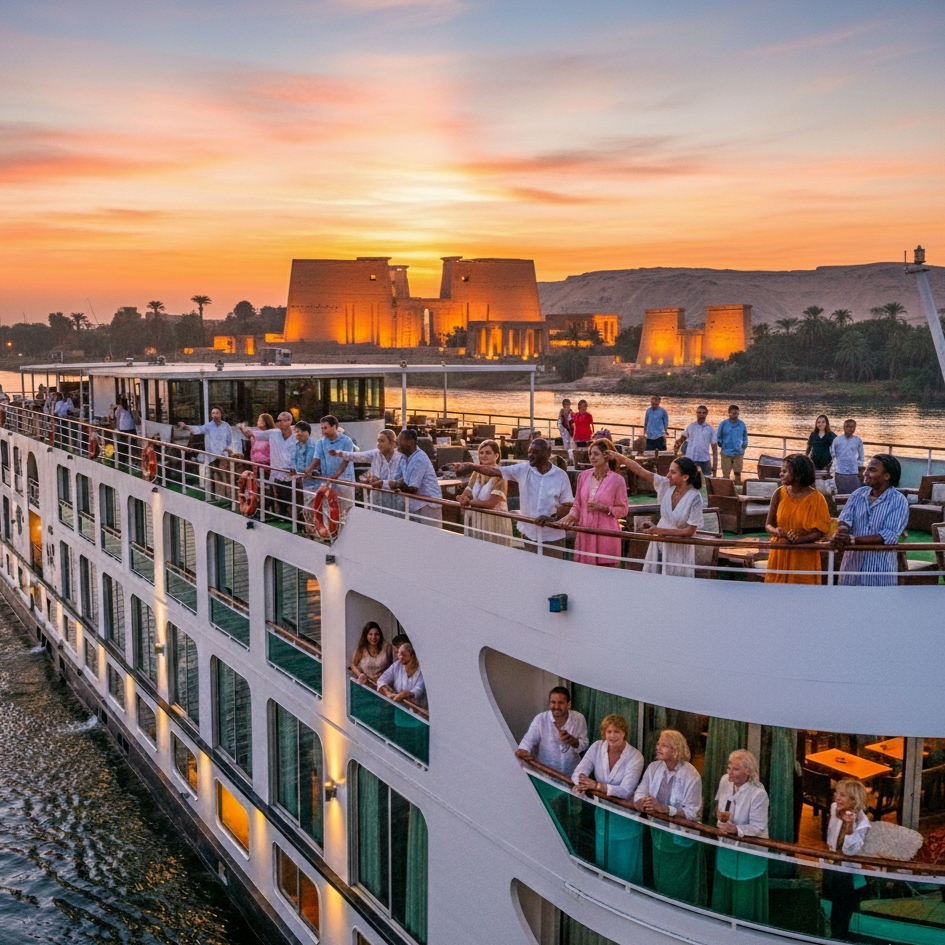Luxor: An Overview
Located on the East Nile approximately 500 miles from Cairo in the ancient capital of Thebes lies the monumental city of Luxor; amongst the oldest cities in the world.
Luxor is home to the open-air museum of Luxor; one of the greatest in the world. The complex comprises temples and tombs from ancient times, boasting significant remains from ancient Egyptian history.
The Temple of Luxor
Commissioned for construction in the mid-1300s, the Temple of Luxor was built and completed in 1400 BCE and remains a popular destination even today. Although several artifacts have been destroyed over time, the Temple of Luxor still boasts a beautiful pavilion and the hypostyle church, along with other temples and tombs.
A Brief Timeline of Thebes & the City of Luxor
During the 11th Dynasty, then Thebes began to thrive after gaining global popularity when Montuhotep II unified Egypt after its troubles during the First Intermediate Period.
Ultimately, the capital of Thebes was invaded and attacked by the Assyrian king and emperor Ashurbanipal and fell in prominence and significance as time passed. Nonetheless, it remained and still remains a city of religious, spiritual, and historical significance amongst Egyptians and tourists alike.
Today, the city of Luxor and its most significant monument, the Temple of Luxor, remain a tourist staple; it was deemed a UNESCO World History Site in 1979. Boasting a population of 200,000+, and encompassing tourist facilities, airports, railway stations, churches, and markets, Luxor is once again a thriving city in southern Egypt.
Other Significant Monuments
While Luxor is most famously known for the Temple of Luxor, it’s also home to other ancient attractions and monuments — arguably equal significance.
Valley of the Kings
While there are several burial sites throughout Egypt, the Valley of the Kings is perhaps the greatest one. Perched on the west bank of Luxor, the Valley of Kings is the burial site to 63 known tombs, with several others potentially still mummified underground.
Tombs of the Nobles
Hosting nearly 400 tombs, the tombs of the nobles are a collection of well-decorated coffins of sorts that tell a story of each of the Egyptian nobles and their significance.
Valley of the Queens
A burial site of the wives of the Pharaohs, the Valley of the Queens was a place of beauty. The site is exclusive to the wives, for the Pharaohs themselves had their own necropolis in the Valley of the Kings.
Mortuary Temple of Hatshepsut
Considered to be a ‘masterpiece of ancient architecture’, the Mortuary Temple of Hatshepsut is most certainly a destination site for tourists and locals alike. Located across from the city of Luxor on Kings Valley Road, it’s a must-visit if you’re in or around the area.
In Summary
The city of Luxor along with the Temple of Luxor is an educational adventure for locals and tourists alike. Bolstering deep-rooted ancient history throughout, and with several monuments for rediscovery, Luxor is sure to excite.
To learn more, or to book your next Egyptian adventure, visit: https://circulatetravel.com







